
Essential Fruit Trees for Your Backyard Orchard
Published: 17/08/2024 | Updated: 13/08/2024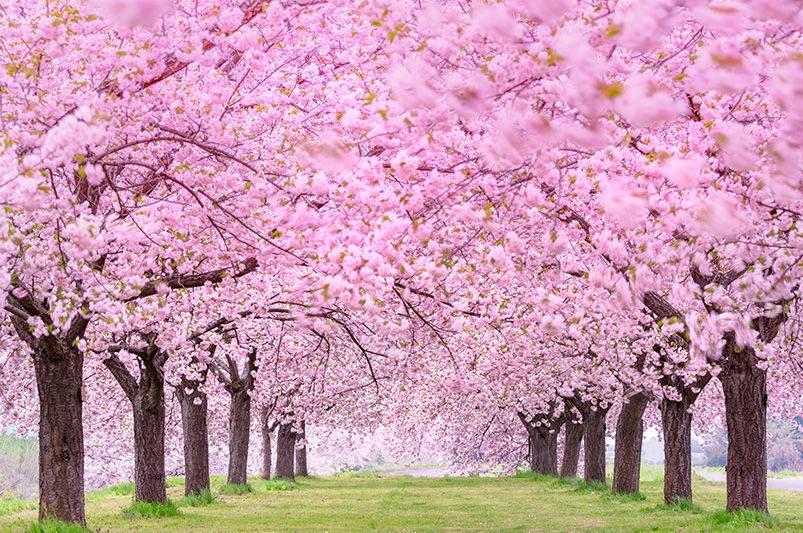
Key Highlights
- Think about biting into a sweet peach or a crunchy apple from your own backyard.
- Choosing the right fruit trees for where you live and using the right planting and care tips can lead to a great harvest.
- This guide will look at five amazing fruit tree options for your own orchard.
- From apple trees that are easy to grow to citrus trees that bring a taste of the tropics, these trees will make your gardening better.
- Get ready to dig in, plant your trees, and enjoy the fruits of your labor!
Introduction
Creating a successful backyard orchard is a great project. It can change your outdoor area into a place with fresh and tasty fruit. By planting your own fruit trees, you can enjoy nature's gifts while making your yard beautiful and shady. No matter if you have a large space or a small yard, choosing the right trees can give you many years of tasty treats.


Essential Fruit Trees for a Lush Backyard Orchard
When you plan your orchard, it’s a good idea to pick fruit trees that can grow well in different climates and soils. Think about your local weather, how much space you have, and what you like. Choosing a mix of trees can help you have a longer harvest season and enjoy different flavors with your family.
This guide will look at five great fruit trees that do well in many home gardens: apple trees, citrus trees, peach trees, cherry trees, and plum trees. Each type brings its own flavors, care needs, and looks, so you can build an orchard that matches your taste.
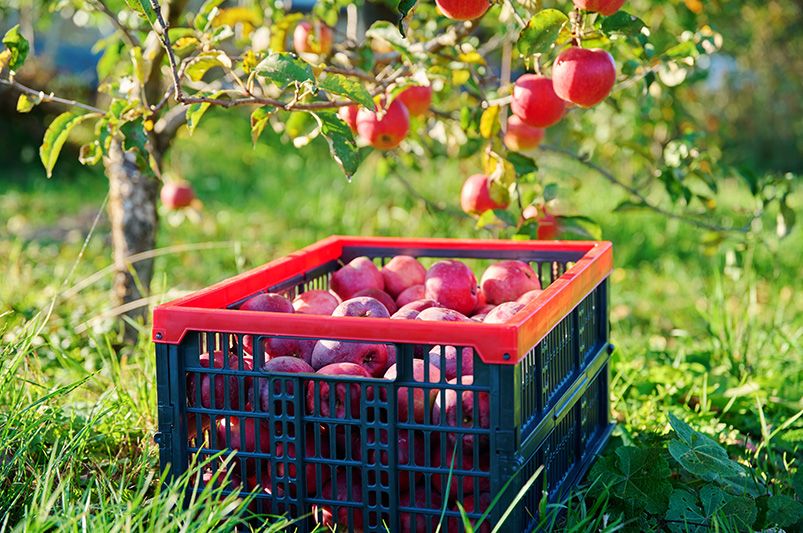
1. Apple Trees - A Versatile Favorite
Apple trees are a key part of many backyard orchards. They are loved because they come in many flavors. You can find everything from tart Granny Smith apples to sweet Honeycrisp apples. Many types of apples grow well in different hardiness zones. They adapt well to various climates and soil types, making them a great choice for gardeners of any skill level.
One big advantage of apple trees is how much fruit they can produce, even in small spaces. These trees like to grow in full sun with well-drained soil. They give homeowners a great harvest of crisp and juicy apples.
You can enjoy apple trees for fresh eating, baking pies, or making homemade applesauce. They are a wonderful addition to any orchard in your backyard. Plus, their pretty blossoms in spring bring beauty, while their tasty fruit gives you joy in the fall.
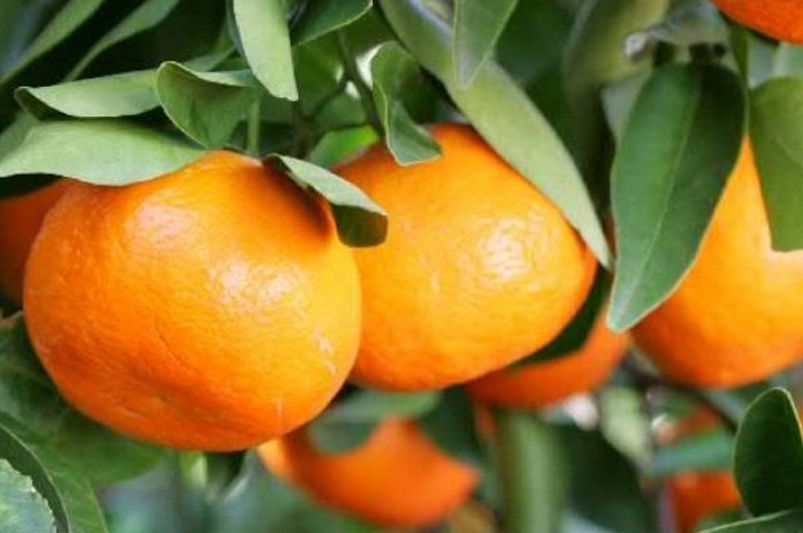
2. Citrus Trees - For a Touch of the Tropics
Adding citrus trees to your backyard orchard brings a piece of the tropics to your home garden. These trees have fragrant flowers and bright fruit. They grow best in warm places with plenty of sunshine. You can choose from lemons, limes, oranges, and grapefruits. There is a citrus tree for everyone.
Citrus trees like full sun, but they can also grow in partial shade. This makes them good for different spots in your backyard. These trees need soil that drains well and regular watering, especially in hot summer months.
With their shiny leaves and bright fruits, citrus trees make your orchard look good. They also give a fresh taste. Their juice is great for drinks, and zest adds flavor to food. Plus, their sweet-scented flowers fill the air with a lovely smell.
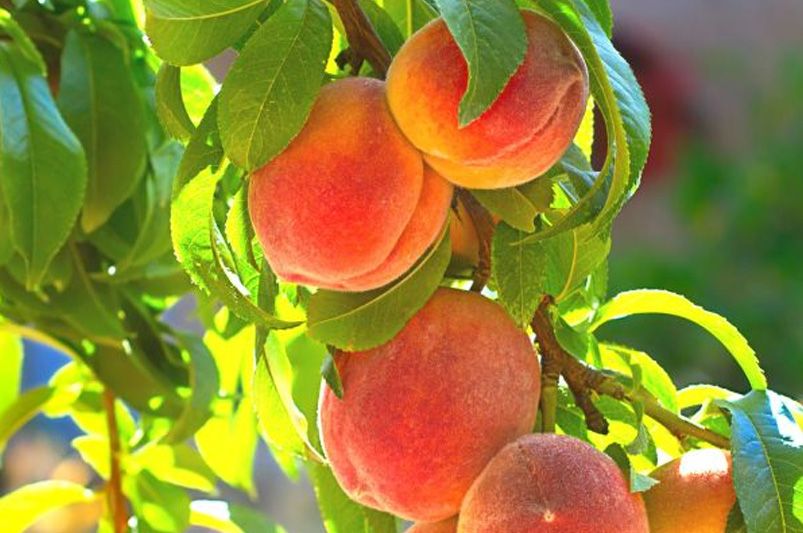
3. Peach Trees - Juicy and Sweet
Peach trees are a popular choice for fruit trees in the United States. They are loved for their juicy, sweet, and tasty fruit. There are many types, from classic freestone to flavorful clingstone peaches. These trees also have beautiful pink flowers in spring that make any backyard look nice.
Peaches grow best in well-drained soil and need full sun to give a great harvest. Regular pruning helps keep their shape and allows good airflow, which stops diseases from spreading.
Peaches are most enjoyable when fresh and straight from the tree. They can also be used in many ways. You can make jams, bake them in treats, or create refreshing summer drinks.
4. Cherry Trees - Blossoms and Fruits
Cherry trees are a beautiful choice for any backyard orchard. They are loved for their lovely flowers in spring and tasty fruit in summer. Some cherries, like the Bing cherry, taste sweet. Others, such as the Montmorency cherry, have a tart flavor.
These trees like full sun and well-drained soil. They need good pollination for a healthy crop. Planting two or more types of cherry trees close together can help with fruit production.
Cherries are a flexible fruit. You can eat them as snacks, bake them in pies or tarts, or make jams. Their bright red color adds beauty to any dish.
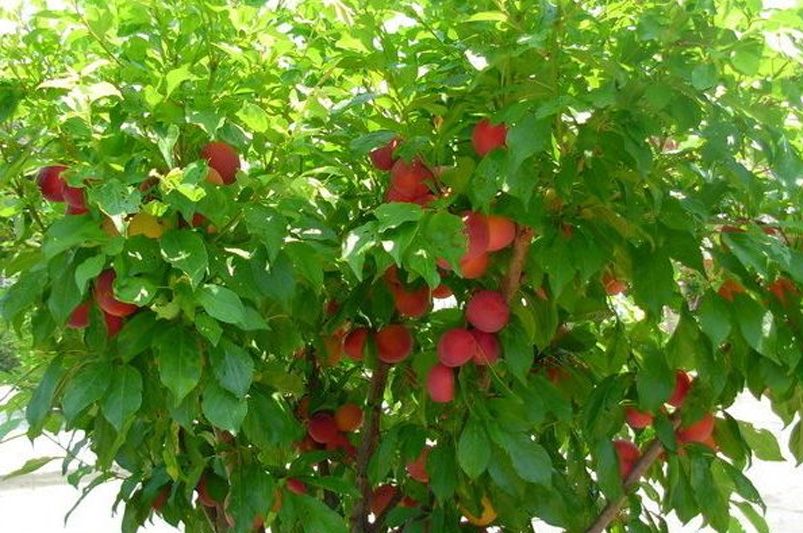
5. Plum Trees - Diverse and Delicious
Plum trees come in many different types. They have many flavors, colors, and sizes. You can enjoy sweet and juicy Santa Rosa plums or the tart and tangy cherry plums. There is a plum for everyone’s taste.
Plums grow best in full sun and soil that drains well. Once they are settled in, they don’t need much care. In spring, their lovely blossoms attract pollinators. This makes your backyard orchard even more beautiful.
Plums are great to eat fresh. You can also use them in many dishes. They are perfect for jams, jellies, pies, and tarts. Plums bring sweetness and tangy flavor to every recipe.
Planting Your Fruit Trees: A Step-by-Step Guide
Proper planting is very important for keeping your fruit trees healthy and productive. To get the best results, follow these simple steps.
First, choose the right spot for your fruit trees. Look at things like sunlight, soil drainage, and available space. Then, get the soil ready. Remove any weeds and mix in organic matter. This will help with drainage and add nutrients to the soil.
Choosing the Right Location
Choosing the right spot for your fruit trees is very important. These trees need plenty of sunlight and soil that can drain well to grow healthy and produce fruit. Before you plant, look at your backyard. Find a place that suits the needs of the types of fruit trees you want.
First, think about how much direct sunlight the spot gets. Most fruit trees need 6-8 hours of sunlight each day. Pick a place that is not blocked by buildings, other trees, or anything else that can create shade.
Next, check the available space for your trees. Make sure there is enough room for them to grow fully without getting too close to each other or any structures.
- Direct Sunlight: Choose places with at least 6-8 hours of direct sunlight each day.
- Partial Sun: Some fruit trees can live in partial shade, but it might lower fruit production.
- Available Space: Pay attention to how big your trees will get and make sure they have enough room to grow.
Soil Preparation and Planting Tips
Before you plant fruit trees in your home garden, it's important to get the soil ready. Good soil helps with draining, provides nutrients, and supports strong roots.
Start by clearing the area where you will plant. Remove any weeds, grass, and debris. Next, dig a hole that is twice as wide and deep as the root ball of your tree. This gives the roots enough space to grow.
Adding organic matter to the soil is very important.
- Soil Test: Think about doing a soil test to check its pH level and nutrients.
- Early Spring: The best time to plant bare-root fruit trees is in early spring.
- Drainage: Make sure the soil drains well to avoid root rot.
Watering and Initial Care
After you plant your fruit tree, it's important to water it well and provide the right care. Good watering helps settle the soil around the roots and aids in root growth.
Water deeply but less often, especially in the first few years after planting. This allows the water to reach the roots. Be careful not to over-water, as this can cause root rot and other issues.
Putting mulch around your fruit tree is helpful. Mulch keeps the soil moist, reduces weeds, and helps control soil temperature. You can use a 2-4 inch layer of organic mulch, such as wood chips or bark. Just keep it a few inches from the trunk of the tree.
- Initial Watering: Water well after planting to remove any air pockets.
- Regular Watering: Continue to water deeply and regularly, especially during dry times.
- Fruit Tree Care: Watch out for pests, diseases, or signs of nutrient lack and deal with these issues quickly.
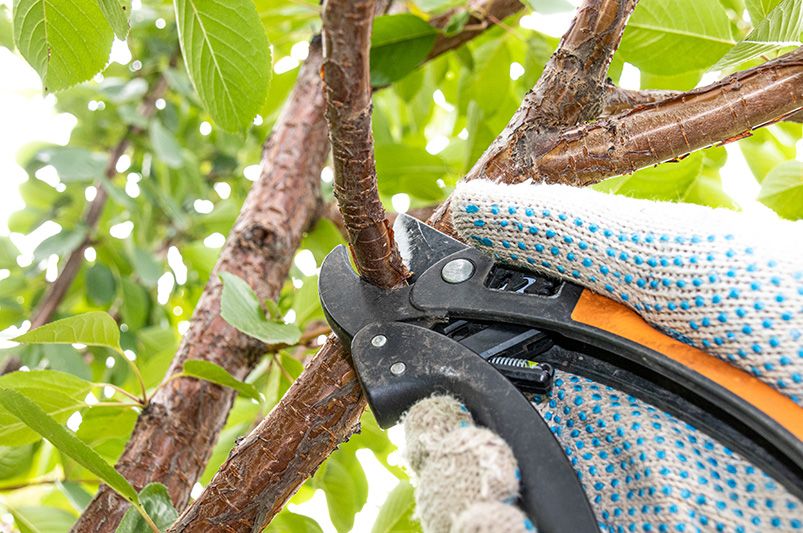
Maintenance Tips for Healthy Fruit Trees
Keeping your fruit trees healthy helps them live longer and produce more fruit. Regular care is important. This includes pruning, managing pests and diseases, and fertilizing. These steps will help your trees stay strong and healthy.
If you use these tips for your orchard, you will create a green and fruitful space in your backyard for many years.
Pruning: When and How
Pruning is important for keeping your fruit trees healthy, shaped well, and productive. By removing dead, sick, or damaged branches, you help stop the spread of diseases and support fresh growth.
The best time to prune most fruit trees is in the dormant season. This means doing it when the trees are not growing much. It is usually in late winter or early spring, before the buds get bigger. Don't prune during the busy growing season because cutting too much can stress the tree.
When you prune, use sharp and clean tools. This will help you make clean cuts and reduce the chance of infection.
- Mature Trees: Mature trees need yearly pruning to keep their shape.
- Prune Regularly: Pruning regularly allows sunlight to reach more parts of the tree.
- Proper Cuts: Make clean, angled cuts just above a bud or branch collar.
Pest and Disease Management
Managing pests and diseases is very important for keeping your fruit trees healthy and productive. By taking action before problems arise, you can reduce damage and enjoy a good harvest.
Check your fruit trees regularly for signs of pests or diseases. Watch for unusual growth, color changes, leaf damage, or insects. Finding problems early helps you manage them better.
Take steps to prevent issues, like keeping everything clean. This means removing fallen fruit and leaves, cutting back infected branches, and not watering from above.
- Pest Identification: It is important to know what pests you have to use the best control methods.
- Disease Resistance: Pick fruit tree types that resist diseases when you can.
- Natural Predators: Attract helpful insects, like ladybugs and lacewings, to help control pests on their own.
Fertilizing for Optimal Growth
Fertilizing your fruit trees is very important. It helps give them the nutrients they need to grow and make fruit. While good soil does provide some nutrients, extra fertilization can make a big difference in their health, strength, and fruit production.
The right type of fertilizer and how much you need to use depends on several things. These include the age of the tree, the type of soil, and the current nutrient levels. It’s a good idea to do a soil test to find out if there are any specific nutrient gaps.
It is best to apply fertilizer during the growing season, starting in early spring. You should avoid fertilizing late in the growing season. This may encourage new growth that can be harmed by winter weather.
- Nutrient Deficiencies: Stunted growth, leaf discoloration, or low fruit production are signs of a nutrient deficiency.
- Growth Stage: The needs for fertilizing change with the growth stage of the fruit tree.
- Balanced Fertilizer: Use a balanced fertilizer that is specially made for fruit trees.
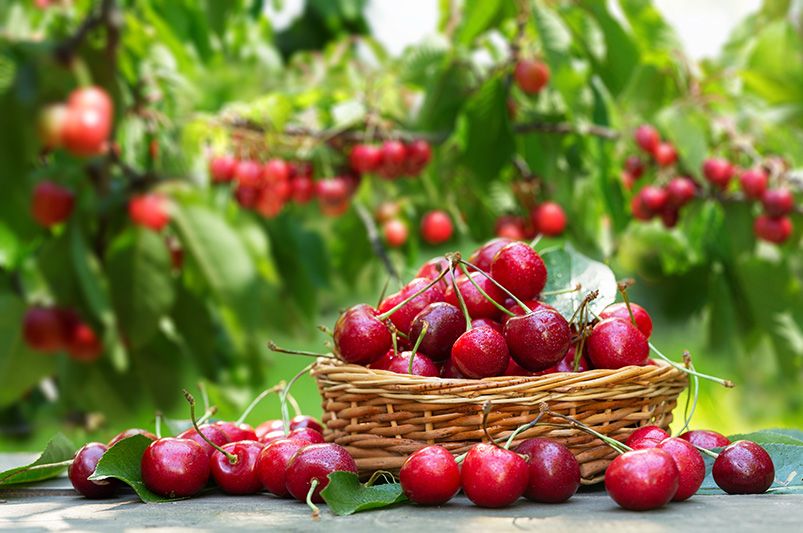
Harvesting Your Fruit: Timing and Techniques
Knowing when to pick your fruit is important for getting the best taste and quality. Different fruit types show ripeness in their own way, so it’s key to learn these signs.
When your fruit is ready, picking it the right way will stop harm to the tree and help you have a good harvest.
Recognizing Ripeness
Recognizing when fruit is ripe is important for getting the best flavor and texture. While color can help, it is not always the best way to check ripeness.
You can test ripeness by gently pressing on the fruit. If it is ripe, it will give a little when you press. Be careful not to press too hard because it can cause bruising.
The smell of the fruit can also tell you if it is ripe. Ripe fruit usually has a sweet and nice smell. Try to smell it near the stem, where the scent is stronger.
- Maturity: Different types of fruit have different times when they are ready.
- Harvesting: Pick the fruit only when it is fully ripe for the best taste.
- Visual Cues: Look for changes in size, shape, and color to see if it is ripe.
Proper Harvesting Methods
When your fruit is fully ripe, using the right way to pick it is very important. This helps keep its quality and supports future fruit production.
Do not pull on the fruit. This can hurt the tree. Instead, twist or lift gently to take it off the branch. Use your hand to support the fruit as you twist or lift. This will stop it from dropping and getting bruised.
Pick your fruit at the right time. This helps avoid overripe fruit, dropping fruit, and any pest or disease issues.
- Harvesting Tools: Use sharp and clean tools, like shears or pruners, for larger fruits.
- Technique: Be careful not to hurt any branches or spurs. These are important for future fruit production.
- Fruit Quality: Using proper harvesting methods can help keep the fruit fresh and make it last longer.
Conclusion
Creating a beautiful backyard orchard with important fruit trees is a fun experience. Apple trees and citrus trees each add their special taste to your garden. If you follow some basic planting and care tips, you can help them grow well and produce lots of fruit. Make sure to think about where to plant, how to prepare the soil, and how to water them to get the best results. Picking your fruits at the right time will give you the sweetest flavor. Share your gardening story on social media to motivate others to start their own backyard orchards. Enjoy gardening!
Frequently Asked Questions
What is the best time of year to plant fruit trees?
The ideal time to plant fruit trees is usually early spring. This is when the soil is thawed, and the trees are still in a dormant state. However, the exact timing can change based on your hardiness zones and the kind of fruit tree you are planting.
How long until my fruit trees start producing fruit?
The time it takes for fruit trees to bear fruit can be different based on the type and variety of the tree. Usually, young trees need a few years to reach maturity and start producing fruit. However, some dwarf varieties might bear fruit earlier than regular-sized trees.
Can I grow different types of fruit trees close together?
Yes, you can grow different kinds of fruit trees close to each other. But you need to think about how much space they need when they are fully grown. Make sure there is enough room for cross-pollination if needed and for sunlight to reach all trees. Choosing dwarf fruit trees can help you plant them closer together.


